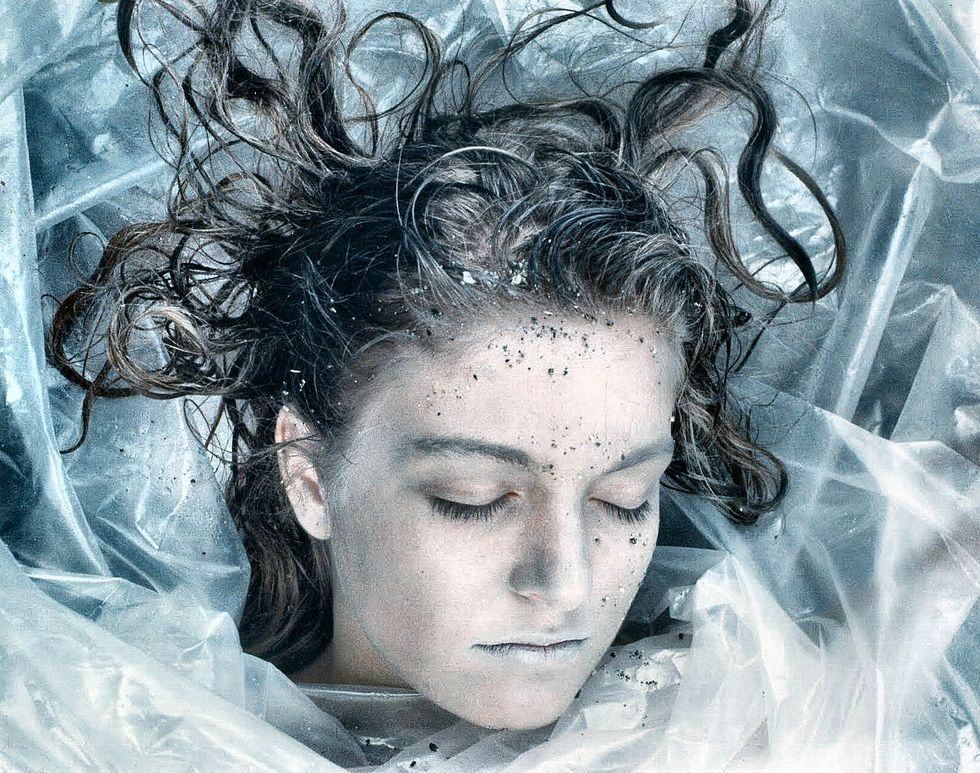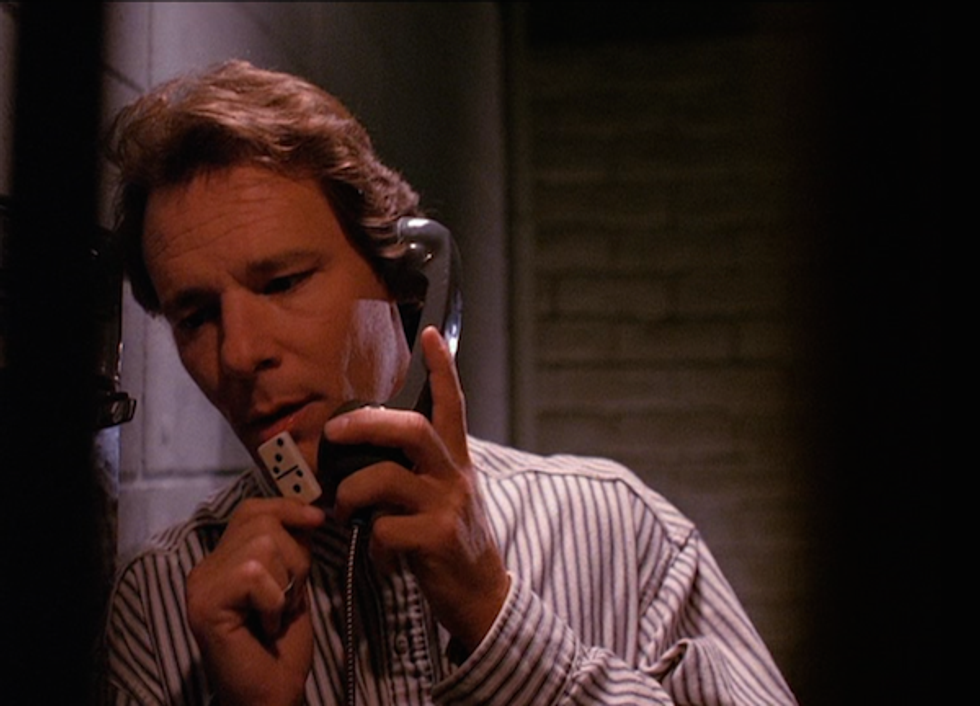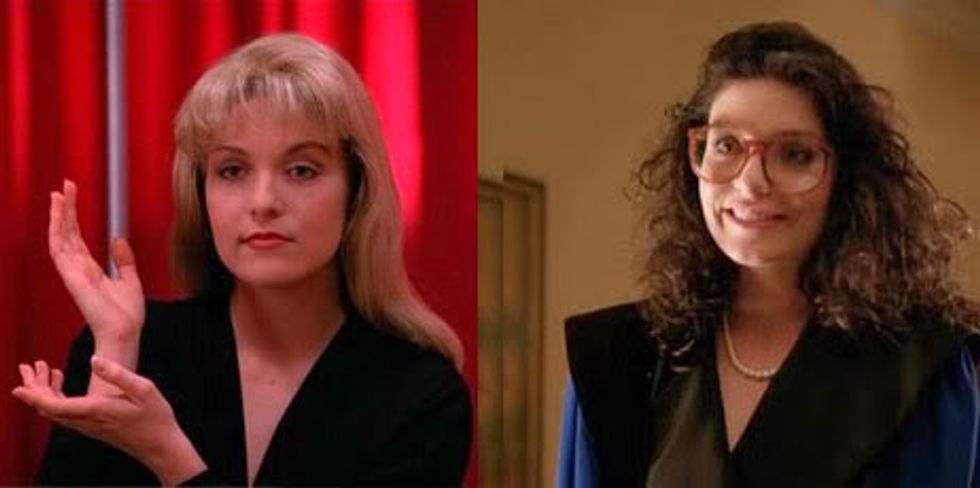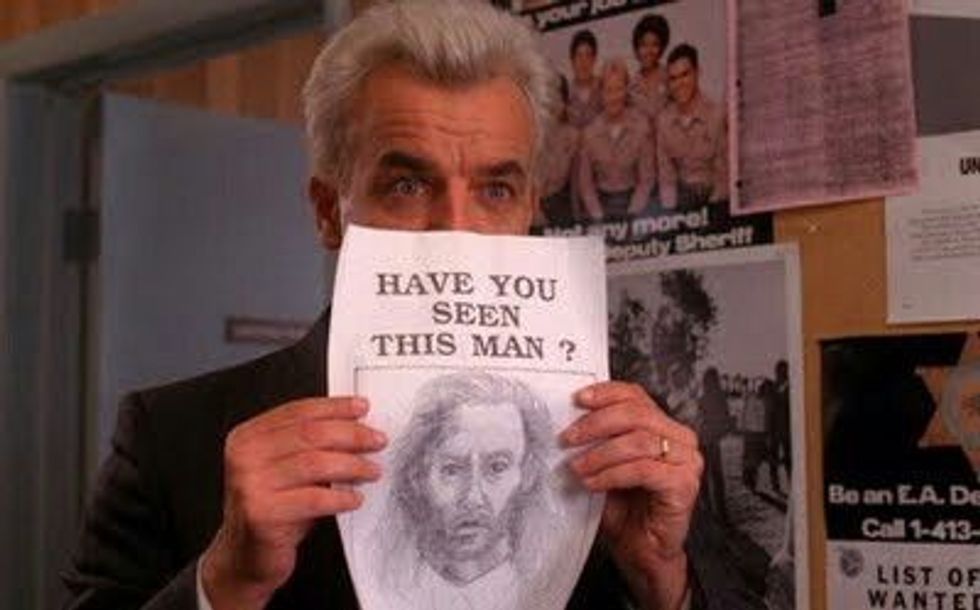As is typical of every summer, it is time to find a new show to binge watch. After talking to my dad (who is a connoisseur of Netflix recommendations), he told me to check out "Twin Peaks." It originally aired in 1990 and 1991 and a revival by the same creators is currently airing on Showtime. My dad advertised it as a surreal crime drama with some very strange quirks, and he sold me. I decided to check it out. And now that I'm starting season two, the only thing on my mind is: who killed Laura Palmer?
Something I love about this show is the abundance of symbols and connections that would be meaningless to someone who wasn't trying to look beneath the surface. It might be the fact that I was obsessed with Pretty Little Liars (past tense, definitely), and was constantly trying to figure out who A was before the reveal every single time, but now I over analyze every little detail in crime shows. And boy, "Twin Peaks" is full of these little mysteries. Caution: if you hate spoilers, don't continue reading. I don't know who killed Laura yet, but I would hate to reveal something else to someone who would like to see the show.
1. Hank's domino.
At first, I just thought this guy was a total weirdo sticking a domino in his mouth. But I think there was some foreshadowing in this domino with the number three. March 3 (3/3) was the date of the mill fire, the murder of Jacques, and Hank's shooting of Leo. It was also the night that Agent Cooper was shot three times in the chest. Later, when Briggs shows Cooper the document with the coding, Cooper's name is listed three times among the random letters and symbols.
2. The lone traffic light.
I think there are a few things associated with the traffic light. A line that has stuck with me is when Cooper says something along the lines of, "Whittling is what you do in a town where a yellow light still means slow down, not speed up." It might just be a symbol for the facade of the simple life in Twin Peaks, adding to another point I'll bring up later. But I've noticed that when the stoplight is shown, there are no cars at the intersection. It still runs when no one is there, just like the fan that is still running at Laura's house every time the staircase is shown (without Laura or her mother on it). It might be a symbol for vacancy or emptiness, like the town is still going with no one in it. I've also noticed that it might be an indication of James' moods. In the scene where Donna catches him and Maddy kissing, the stoplight changes from green to red.
3. Mirroring.
Ah, doppelgängers. Reminds me of The Vampire Diaries. Laura (on the left) and her cousin Maddy (on the right) are played by the same actress. Laura also led a double life as both squeaky clean Homecoming Queen and coked-up prostitute. The soap opera that plays on the television sometimes, Invitation to Love, also mirrors some of the events happening in Twin Peaks. A photograph is hanging on the wall in both Catherine's house (it can be seen when she apologizes to Pete in the season one finale) and at the sheriff's station (it is the photograph that is shot when Waldo is killed). The show is also called Twin Peaks (emphasis on the Twin). Coincidence? I think not. I'm not sure what the significance is of the plethora of mirrors yet, but I've definitely noticed them.4. Nature vs. Industry.
The title sequence of the show portrays this very well. Images of the trees and the waterfalls in Twin Peaks are juxtaposed with images of the mechanics in the sawmill. I've noticed that characters who interfere with the course of nature (Catherine, Jacque, Leland, Ben Horne, Leo, Hank, and others) are the bad guys. People who connect with nature, such as Margaret - the Log Lady - and Harold Smith are inherently good. For now.5. Skewed images of innocence.
Leland's hair changed to the color white after murdering Jacques - overnight! I thought that was weird, especially since he seems to be ~all better~ now. If it signifies a change, I wondered, why white? White is a color of purity and innocence, of being clean. Is it a purposeful misdirection? I always knew there was something weird about him. There is also the use of Donna's sister playing the piano during the end credits, which is odd because it is usually Laura's picture used during the credits. She's wearing a fairy costume while she plays, which adds to her innocent appearance. Is it foreshadowing? Is it a symbol for her possible future corruption?There are many other symbols I haven't listed here, and I'm sure I will learn more about them as I finish out season two. Fingers crossed that season three on Showtime will be just as mysterious and captivating as the first two seasons.





















